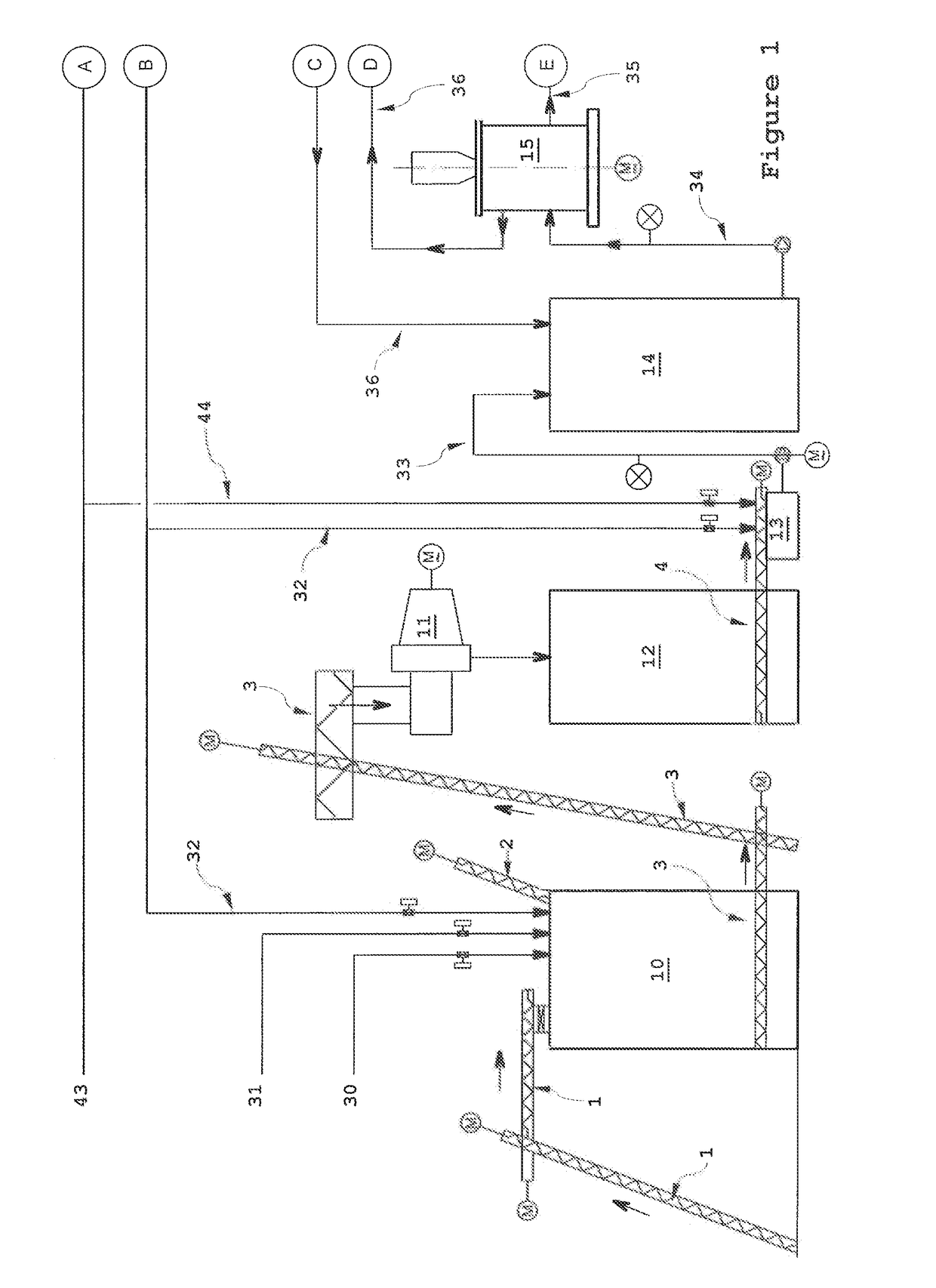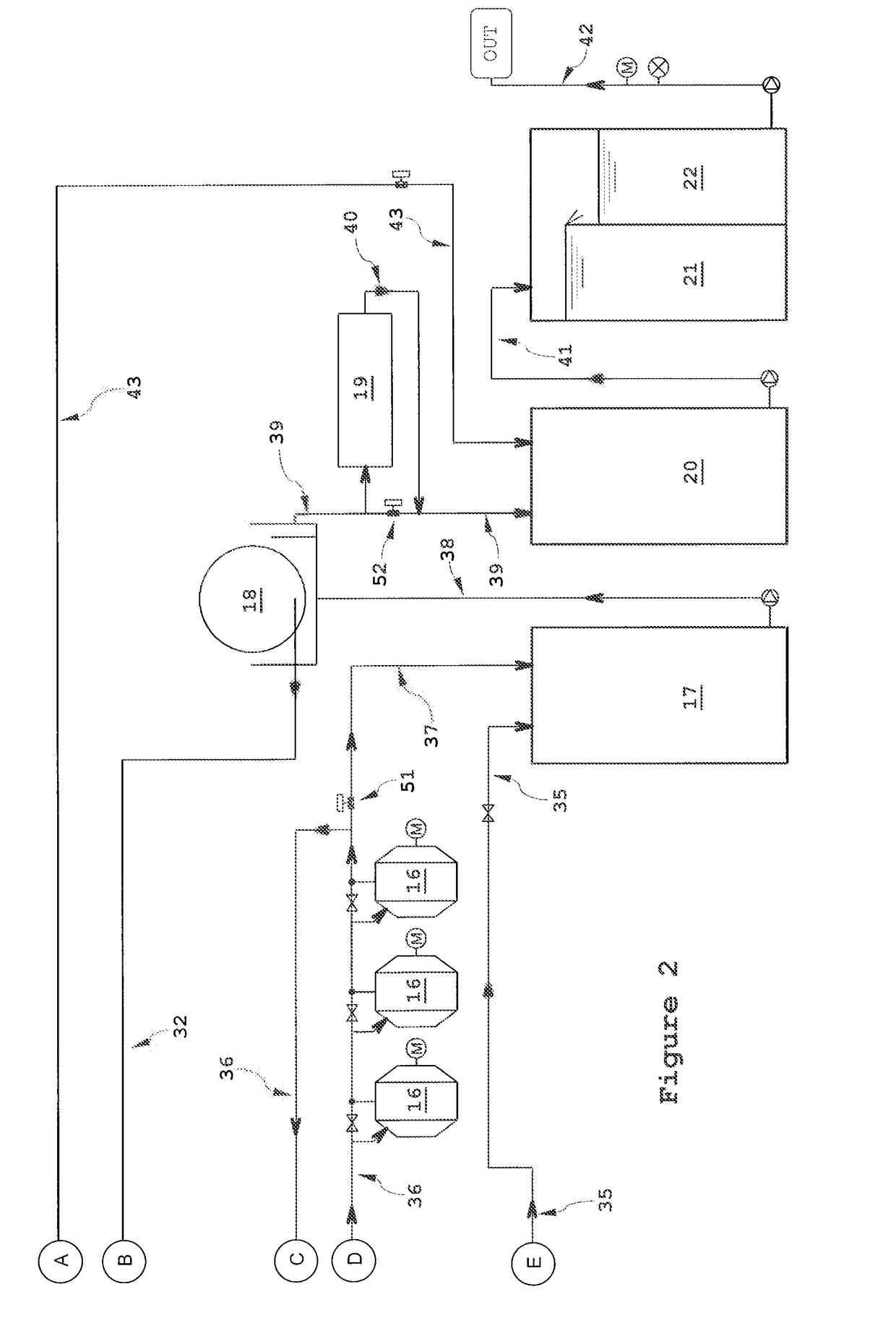A continuous process for production of cellulose pulp from grass-like plant feedstock
a technology of cellulose pulp and grass-like plant feedstock, which is applied in the direction of continuous pulping process, pulping with inorganic bases, papermaking, etc., can solve the problems of high water and energy consumption, high energy consumption, and environmental impact of conventional cellulose pulp manufacturing
- Summary
- Abstract
- Description
- Claims
- Application Information
AI Technical Summary
Benefits of technology
Problems solved by technology
Method used
Image
Examples
Embodiment Construction
[0070]The invention is related to an improved continuous process for production of cellulose pulp from dust-free comminuted grass-like feedstock such as miscanthus / Miscanthus×giganteus, Andersson / .
[0071]The process is performed in a continuous manner through several manufacturing phases, i-vii, as shown in FIG. 1 (phases i-v), followed by FIG. 2 (phases v-vii):
(i) Preparation of the Grass-Like Plant Feedstock
[0072]The feedstock is prepared by comminuting, to produce a material with longitudinal size distributed from 1.5-30 cm and diameter of 0.5-15 mm. Comminuting of starting grass-like material is carried out by conventional comminuting machines or supplied directly from the fields, if the crops were collected by suitable combine harvester, equipped with adequate chopping device yielding the plant material of above-stated particles dimensions.
[0073]Primarily, the comminution should be performed in a mild manner yielding fibrous material predominantly comminuted along the fibers, in...
PUM
| Property | Measurement | Unit |
|---|---|---|
| diameter | aaaaa | aaaaa |
| temperature | aaaaa | aaaaa |
| temperature | aaaaa | aaaaa |
Abstract
Description
Claims
Application Information
 Login to View More
Login to View More - R&D
- Intellectual Property
- Life Sciences
- Materials
- Tech Scout
- Unparalleled Data Quality
- Higher Quality Content
- 60% Fewer Hallucinations
Browse by: Latest US Patents, China's latest patents, Technical Efficacy Thesaurus, Application Domain, Technology Topic, Popular Technical Reports.
© 2025 PatSnap. All rights reserved.Legal|Privacy policy|Modern Slavery Act Transparency Statement|Sitemap|About US| Contact US: help@patsnap.com


